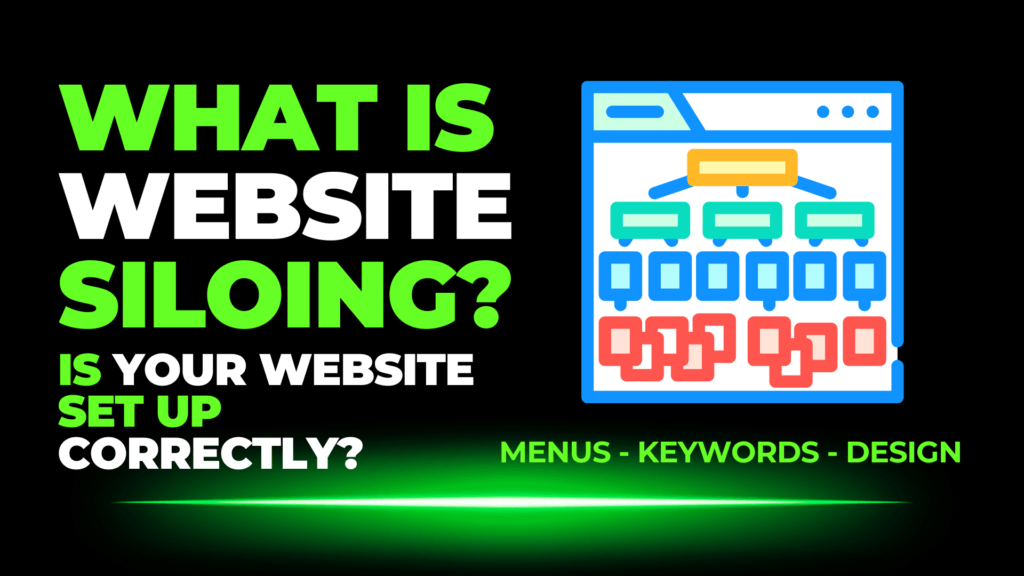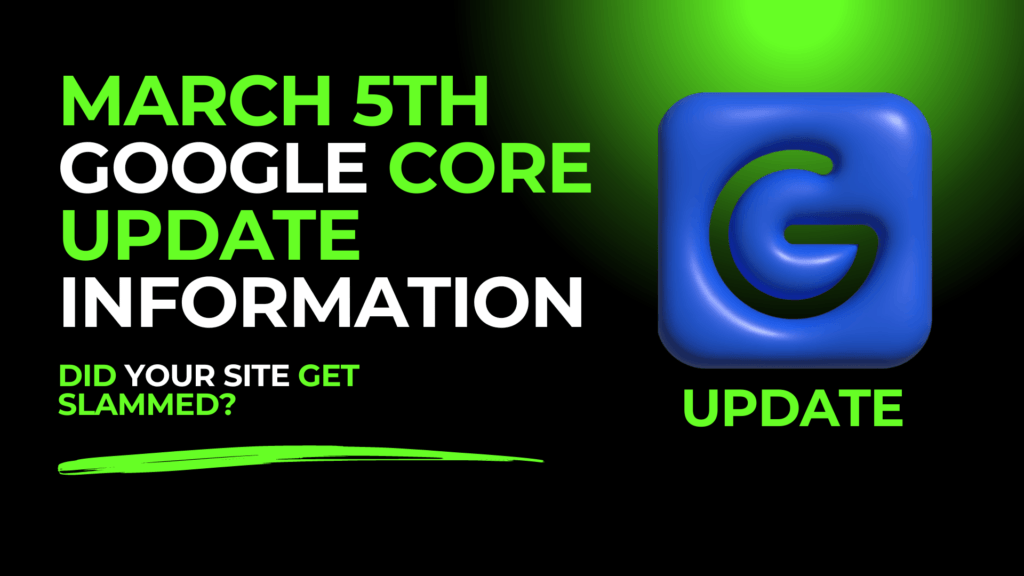Learning to outrank your competition and get your blogs ranked on Google, Yahoo, and Bing search engines is a valuable skill if you want to drive targeted free traffic to your website.
In this blog I will cover 11 must do’s that will increase your chances of getting your blogs to rank higher than your competition, and on page 1 of search engines, more specifically Google.
Why Get Your Blogs Ranked On Google
Over the years I have sold thousands worth of affiliate products online through free traffic sources like blogging, however, it was not always like this for me.
When I first started my affiliate marketing journey online I thought it was all going well until months later I still found that my blogs weren’t ranking in search engines and I still had very little to no traffic.
This is because I was not good at blogging, and I did not know the proper structure of what a blog should include and look like to be favored by Google.
Reasons To Get Your Bloggs Ranked On Google?
There are a few reasons why we want our blogs ranked on Google, and capitalizing on this will have a positive result in more traffic, more leads, and of course more sales.
Reasons To Get Your Blogs Ranked:
- More Targeted Free Website Traffic: 90% of people searching on Google do not move on to page 2 of search results. This means if your blogs do not rank on page 1, you will miss out on 90% of possible traffic.
- More Traffic Means More Data: All websites should be connected to Google Search Console so user information is recorded. By knowing which pages people are visiting most often and which information is converting well, we can tweak other blogs to be more optimized or target more specifically what people are searching for.
- UX (User Experience): Through GSC we can also find out how long people are spending on each page. Knowing which pages are not performing and keeping the viewer interested means we can edit and change to be more engaging
- Website authority: Backlinks are a huge part of website authority, however, if your blogs are working well, and UX is good, Google will favor your website and give more authority: Note this is just a small % of the total authority score, and overall, backlinks are the most important.
Besides the tips I am going to share with you today, there are also other factors that may contribute to your blogs not being ranked in search engines, such as your niche and the competition associated with that niche, your competition’s domain authority scores, and website siloing, and lastly the quality of your information in the blog.
11 Tips To Help Get Your Blogs Ranked On Google

These 11 tips are what I would call the essentials to cover when writing any blog. There is a plugin that will help you with this and I will cover that later on in the blog, but before then, here are my 11 tips for getting your blogs ranked on Google.
Tip 1 – Blog Length:
Blogs should be on average around 1800 – 2500 words long. You can have shorter and longer blogs, just keep the average in mind.
Tip 2 – Keyword Research:
Always conduct keyword research before starting any new blog. There are free tools like “Google Keyword Planner and Google Search” although I would strongly recommend using a keyword search tool like “Jaaxy” that shows more metrics into competition and search volume than other free tools.
Tip 3 – Always Pick One Main Target Keyword
After the keyword research stage, you will “hopefully have found your focus or target keyword with high search volume and low competition. This is going to be the keyword we use throughout the blog.
Tip 4 – The Blog Title Needs To Have Your Keyword Included:
You must always include the focus keyword in the SEO Title. This is what will show up in search results if your blog ranks.
Tip 5 – Include The Focus Keyword In The Opening Paragraph:
Including the keyword in the opening paragraph reinforces to Google and visitors what your blog is about. This is super important that people see exactly what it is they are looking for when reading over the first paragraph.
Tip 6 – The Use Of Keywords In H2 and H3 Blog Titles:
You must use the keyword throughout the blog in your H2 and H3 headings. Readers who scroll down the page are more likely to stay on your website if they are reading and seeing visually, headings that are associated with the main H1 title of your blog.
Tip 7 – Image Alt Attribute:
Every image on your blog should contain an “Alt text. This tells people who are visually impaired what the image is about. Text-to-speech is often used in this situation and is great for UX ( User Experience )
Tip 8 – Include At Least One Internal Link:
Always include 1 – 2 internal links to other pages on your website. This tells Google you have other valuable information on your website that visitors may find useful.
Tip 9 – Include One Outgoing Link:
Include one external link in the blog. This is good practice although I would suggest adding a no-follow tag if the external link is going to be an affiliated product link.
Tip 10 – Include The Focus Keyword In The URL:
Your blog’s focus keyword should always be included in the URL or permalink. Once again this shows Google and visitors this blog is all about your chosen keyword.
Tip 11 – Include The Focus Keyword In The Meta Description.
Always use the keyword in the meta description as this shows relativity to people searching your keyword and will increase your blog CTR ( Click Through Rate )
Why Use the AIO SEO Plugin to Help Get Your Blogs Ranked on Google?

When writing blogs I always use the AIO SEO plugin to make sure I have all of these 11 points are ticked off, insuring me my blog is fully SEO optimized. There is also other features with the AIO SEO plugin.
The AIO SEO Plugin is free to install and use although they do have a paid membership upgrade plan that I have personally never used.
Main AIO SEO Features:
-
Meta Tags Optimization:
- The plugin allows you to easily optimize your meta titles and descriptions for each post and page. These tags are crucial for search engine optimization as they provide a concise summary of your content and is essential in getting your blogs ranked on Google search.
-
XML Sitemaps:
- It generates XML sitemaps automatically, helping search engines better understand the structure of your site and index your content more efficiently.
-
Canonical URLs:
- All in One SEO Pack helps you set canonical URLs to avoid duplicate content issues. Canonical tags specify the preferred version of a page when there are multiple versions with similar content.
-
Social Media Integration:
- The plugin often includes features to optimize your content for social media platforms, allowing you to set custom titles, descriptions, and images for social sharing.
-
Rich Snippets:
- Some versions of the plugin may include options for adding rich snippets to your content. Rich snippets provide additional information in search results, potentially increasing click-through rates.
-
Google Analytics Integration:
- Integration with Google Analytics allows you to track your website’s performance and gather insights into user behavior.
-
Custom Post Type Support:
- Allowing optimization for various content types, including custom post types, gives you flexibility in managing your SEO settings.
-
Compatibility:
- The plugin is designed to be compatible with various WordPress themes and plugins, providing a seamless integration into your website.
-
Automatic Optimization:
- While you can customize settings, the plugin also offers automatic optimization for those who prefer a more hands-off approach.
-
Advanced Features (Pro Version):
- The plugin often has a Pro version that includes advanced features such as WooCommerce SEO support, video SEO, local SEO, and more. These features are typically designed for users with specific needs or larger websites.
To use the All in One SEO Pack plugin, you can install it directly from the WordPress plugin repository. Once activated, you can access its settings from the WordPress dashboard and configure it according to your SEO needs.
Keyword Research And Rank Tracker
All blogging should start with keyword research, this will identify any potential low-competition keywords with high monthly search volumes, and to do this I use a keyword research tool named Jaaxy.
By doing this research I can greatly increase the chance of getting my blogs ranked on Google.
Jaaxy is the ultimate in keyword research, and allows us to find and see valuable insights into keyword people are searching for, but also how often, and the amount of competition for those keywords.
By not doing keyword research and identifying potential keyword opportunities, your blogs will most probably get lost in the digital world never to be found or ranked on Google, Yahoo, or Bing search engines.
Key Features Of Jaaxy
Jaaxy is used for multiple purposes all associated with keywords and keyword research.
From brainstorming to tracking blog rankings on Google, Yahoo, and Bing search engines, here is a list of the main tools found on Jaaxy.
- Keyword Search: Find high-value keywords with low competition.
- Alphabet Soup: Enter a phrase and let Jaaxy work its magic. Find long-tailed keywords people are searching for.
- Saved List: Save all your keywords into lists for quick referencing.
- Searched History: Forgotten what you have searched for, don’t fear, Jaaxy is here!
- Search Analysis: Type in your keyword and see who is ranking, then see their backlink count, links on the site, average blog word count, and more.
- Affiliate Program Search: Find affiliate programs in any niche!
- Brainstorm: Find more ideas for blogging.
- Site Rank: If you are blogging you will want to know where your blogs are ranking on Google. The Jaaxy site rank feature will track and monitor blogs in the first 20 pages of Google, Yahoo, and Bing.
Get 30 FREE searches on Jaaxy!
Now Go Get Your Blogs Ranked On Google!
These are the 11 points I always complete to help get my blogs ranked on Google.
I hope this article will help you do the same.
You can now go and edit your blogs that aren’t ranking well in Google, and increase the chances by adding in the 11 key points to optimize your blogs.
If you have any questions, please leave them in the comments section below and I will be sure to read and/or reply.





